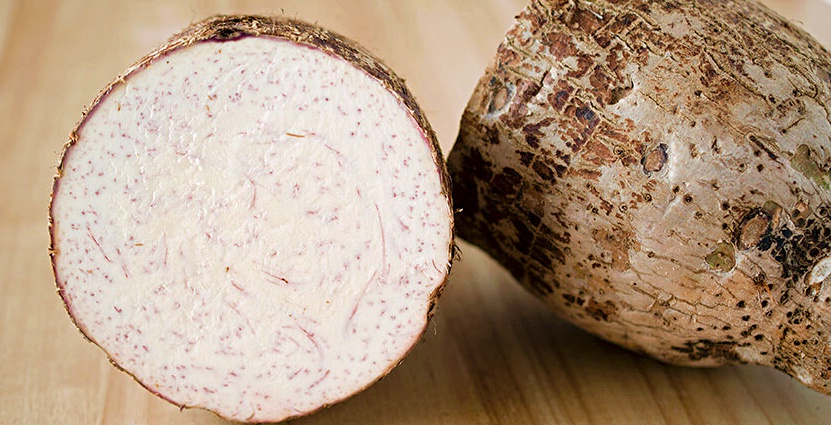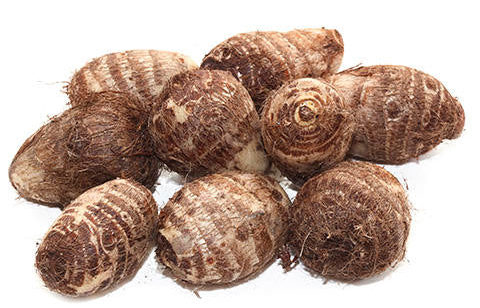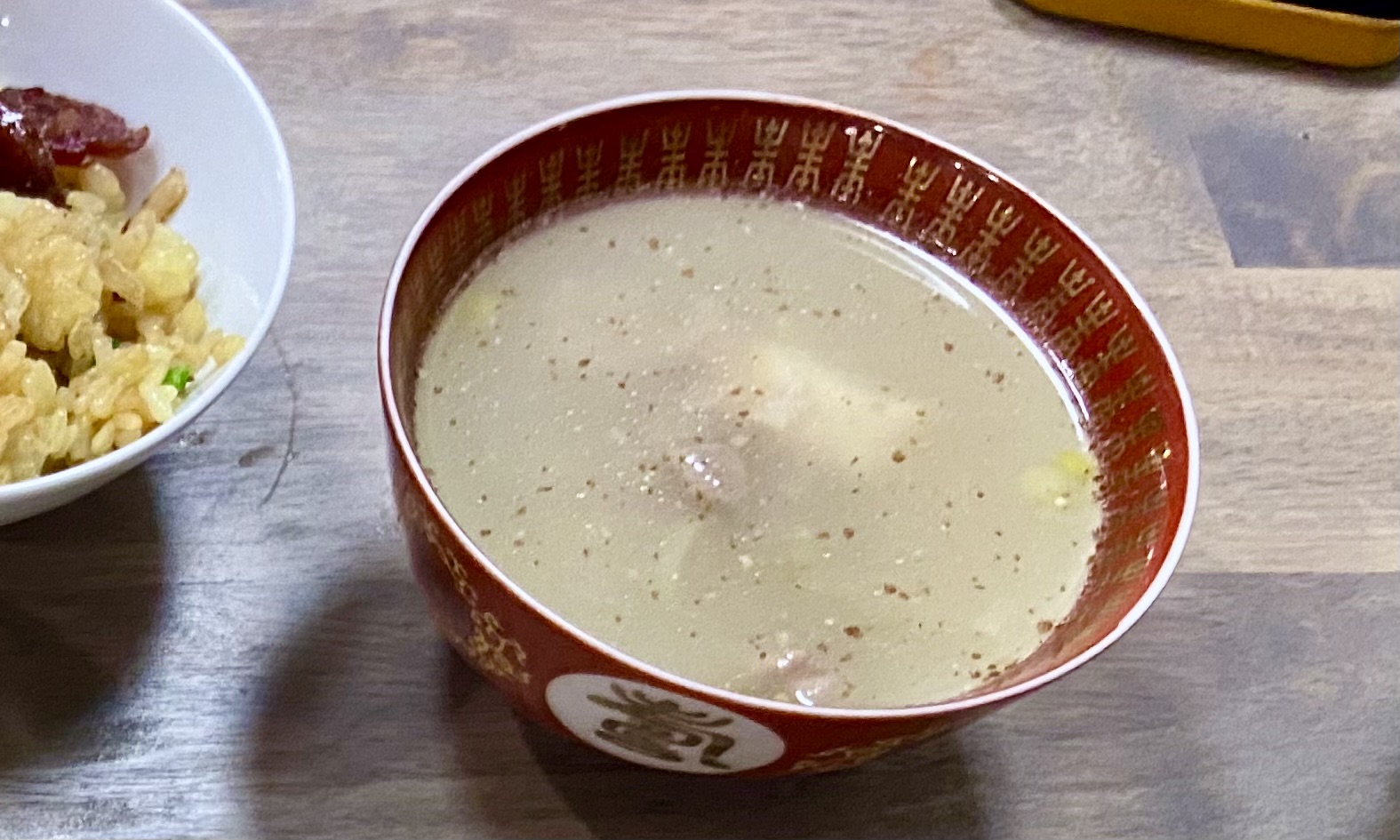I had never had Korean taro root before.
After ordering a bag of taro root that sat in my fridge for a month (I originally wanted to use them to cook Japanese satoimo nimono, but ran out of time), I decided to use them over the weekend to try something new.
First off… Korean taro (and Japanese taro) is different to Chinese taro, which is the kind I am used to.
Chinese taro is large, often the size of a large papaya. It has a thin brown bark-like skin and purple veins on the inside. When cooked, the white and purple colors of the flesh meld together to create a pale lavender-grey color. The texture is like a potato, but creamier and is served sliced and stewed with meat or mashed into a sweet dessert (yes, it is a savory and a sweet food option).
Korean taro, on the other hand, are small, fitting into the palm of your hands. The skin is a hard bark and hairy like a coconut and the flesh is pure white. When cooked, the taro flesh is starchy like a potato, but also slimy like okra. It is more “yam”-like (think nagaimo) than the Chinese counterpart.


Both varieties are pretty toxic when raw and even irritate the skin if not handled properly (though i think the smaller hairier ones irritate skin more than the large one). Once cooked though, the toxins are cooked out and it’s perfectly safe to eat. In fact, it is known to be one of the earliest cultivated plants for consumption.
I followed a recipe for Taro Soup by Maangchi in order to try this root vegetable. The soup itself was fairly basic: taro, beef, garlic, water, salt, fish sauce, green onion, and most importantly perilla seed powder.
This was also my first time cooking with only perilla seed powder as the flavoring agent. Perilla seeds (or shiso seeds) are a common Korean spice, but outside of gamjatang (pork neck bone stew), I hadn’t really seen it used in any recipes. Out of the bag it smells… odd, so I wasn’t expecting the soup to taste so good!
Perilla seeds definitely have their own distinct flavor and Maangchi’s recipe does call for a lot of it. It’s nutty, but also has this top-of-mouth flavor that I can’t quite distinguish. Once you get past the new-ness of the flavor, the soup is really tasty and the taro makes it quite hearty-feeling.
My soup turned out a bit… murky though. I can’t decide if it was due to not soaking the beef first (therefore removing the blood) or if it was due to my perilla seeds. Maangchi’s recipe calls for perilla seed powder, whereas I only had whole perilla seeds, so I ground my own in a mortar for this soup. The powder itself was pretty brown in color. Maybe store-bought perilla seed powder has less of the husk and is therefore whiter in color.
I will try this again one day and see if I can get that more pure white color that she depicts in her photos.

Leave a Reply